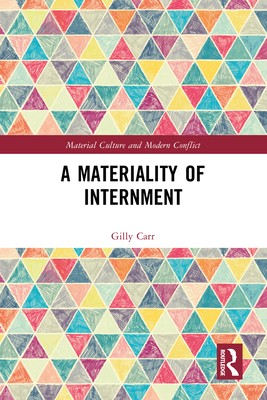
- We will send in 10–14 business days.
- Author: Gilly Carr
- Publisher: Routledge
- ISBN-10: 1032259159
- ISBN-13: 9781032259154
- Format: 15.6 x 23.4 x 1.9 cm, hardcover
- Language: English
- SAVE -10% with code: EXTRA
Reviews
Description
More than two thousand people from the British Channel Islands were deported to and interned in Germany during the Second World War, making up as many as 60% of all interned British citizens in occupied territory during this period.
This book carries out an in-depth analysis of artwork, objects, oral testimonies, archives, poetry, letters, diaries and memoirs gathered from the internees and drawing from around one hundred collections. The work is based on over 15 years of research and interviews with more than 65 former internees, and explores analytical themes and narratives of placemaking, resistance, communities, food and cooking. It also proposes new concepts and categories to help us understand objects that distinguish the experience of internment.
This book will be of great value for scholars and museum professionals, as well as postgraduate students in the field of Conflict Archaeology and scholars of the Second World War. Cumulatively, this materiality comprises one of the major surviving assemblages of internees to emerge from the war, comparable in size, quality and importance with that from other theatres of war.
EXTRA 10 % discount with code: EXTRA
The promotion ends in 20d.02:41:42
The discount code is valid when purchasing from 10 €. Discounts do not stack.
- Author: Gilly Carr
- Publisher: Routledge
- ISBN-10: 1032259159
- ISBN-13: 9781032259154
- Format: 15.6 x 23.4 x 1.9 cm, hardcover
- Language: English English
More than two thousand people from the British Channel Islands were deported to and interned in Germany during the Second World War, making up as many as 60% of all interned British citizens in occupied territory during this period.
This book carries out an in-depth analysis of artwork, objects, oral testimonies, archives, poetry, letters, diaries and memoirs gathered from the internees and drawing from around one hundred collections. The work is based on over 15 years of research and interviews with more than 65 former internees, and explores analytical themes and narratives of placemaking, resistance, communities, food and cooking. It also proposes new concepts and categories to help us understand objects that distinguish the experience of internment.
This book will be of great value for scholars and museum professionals, as well as postgraduate students in the field of Conflict Archaeology and scholars of the Second World War. Cumulatively, this materiality comprises one of the major surviving assemblages of internees to emerge from the war, comparable in size, quality and importance with that from other theatres of war.


Reviews